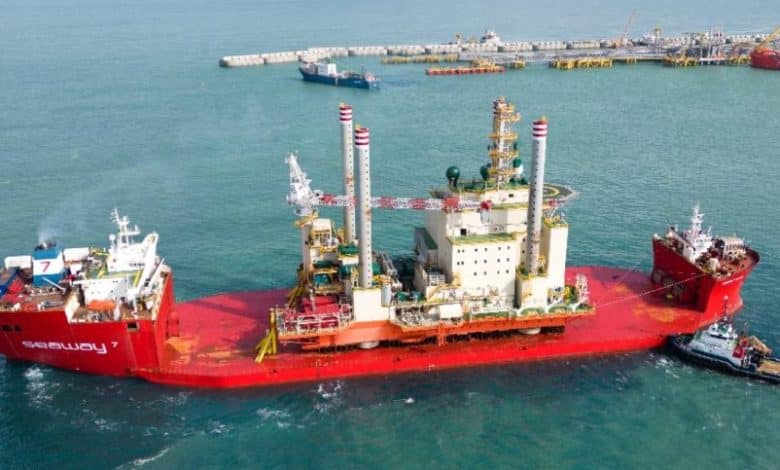VESSEL REVIEW | GTA Hub QU – New jackup accommodation platform to support BP’s LNG project in West Africa waters

VESSEL REVIEW | GTA Hub QU – New jackup accommodation platform to support BP’s LNG project in West Africa waters
China’s Yantai CIMC Raffles Shipyard has delivered a new self-elevating accommodation platform for UK energy company BP. Designated a quarters and utilities (QU) facility, the platform will support BP’s activities at the Greater Tortue Ahmeyim (GTA) LNG project offshore Mauritania and Senegal.
As well as providing accommodations for 216 personnel, the facility contains the utilities required to operate a nearshore LNG terminal. These utilities include a power station, a water treatment plant, and a terminal control station. The latter station will help direct the numerous vessels that arrive and depart from the terminal.
BP said the accommodation platform is designed to allow personnel to live and work comfortably together offshore. The massive facility measures 95 metres long and 70 metres wide and displaces more than 10,000 tonnes. Also fitted are cables totalling 540,000 metres and more than 9,000 pieces of explosion-proof equipment.
CIMC said the facility was built to allow operations for up to 25 years before requiring dockside maintenance. The accommodation spaces – which include berths, offices, and recreation rooms – were designed to meet the requirements of emergency shelters, and the noise level of the living and working areas is kept to less than 45 dB, which is equivalent to the ambient sound of a suburban area during nighttime.
The QU was transported from China to an area 10 kilometres offshore on the maritime border of Mauritania and Senegal. The QU was installed with the aid of an innovative design feature. Unlike a conventional jacket and topsides concept – which would take several months to install, hook up, and commission – the QU is able to lift itself out of the water using its four giant hydraulic legs.
Alongside the QU, the hub terminal will host a floating liquified natural gas (FLNG) vessel, which is currently under construction in Singapore. The terminal will also provide for safe offtake of the liquified gas to LNG carriers.
The hub terminal will be protected by a 1.2-kilometre-long breakwater composed of 21 giant concrete caissons placed on a soil-stabilising foundation built from two million tonnes of rock sourced in Mauritania. The final caisson was installed in May 2022, completing the breakwater.
The entire LNG project is scheduled for start-up in the third quarter of 2023.




